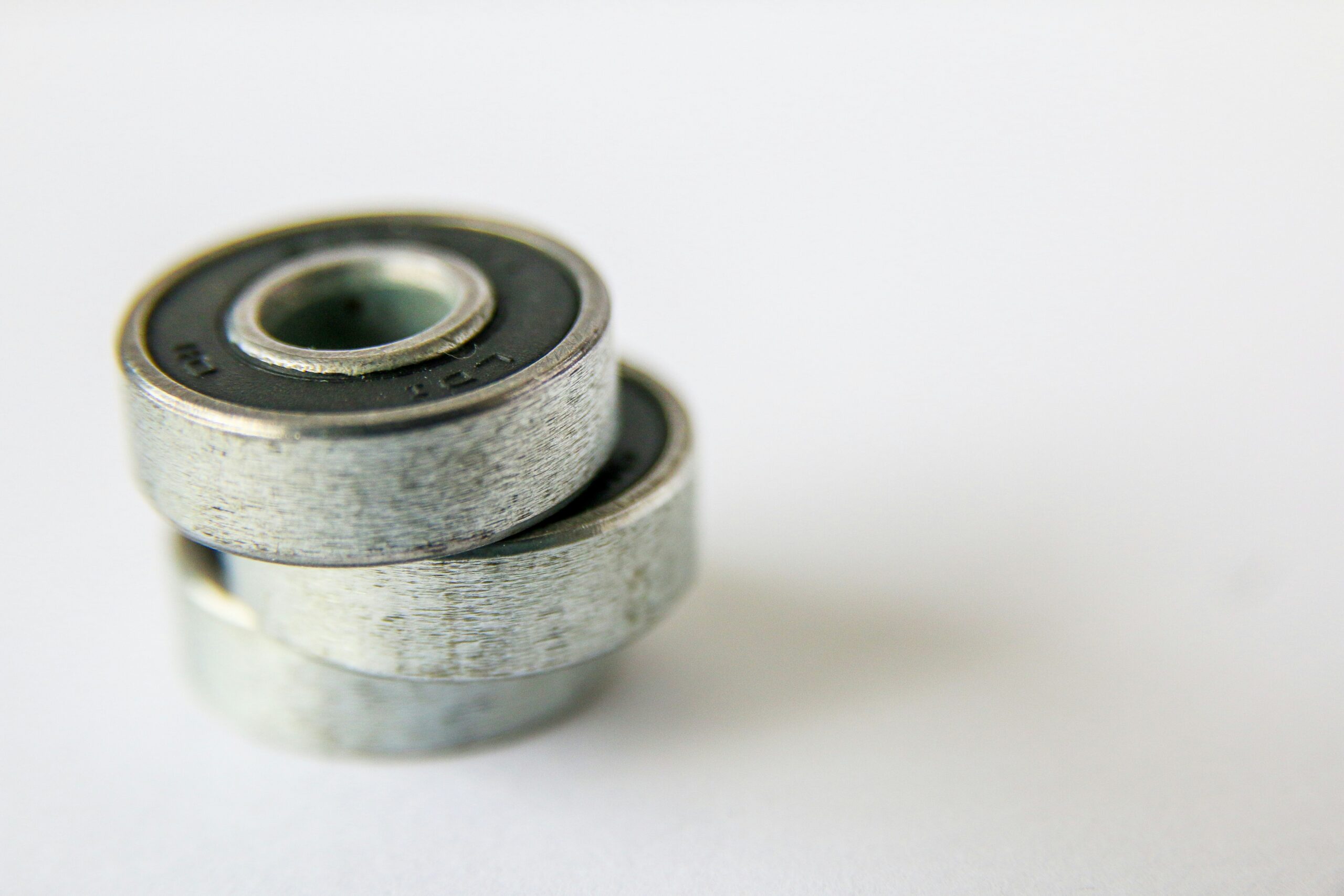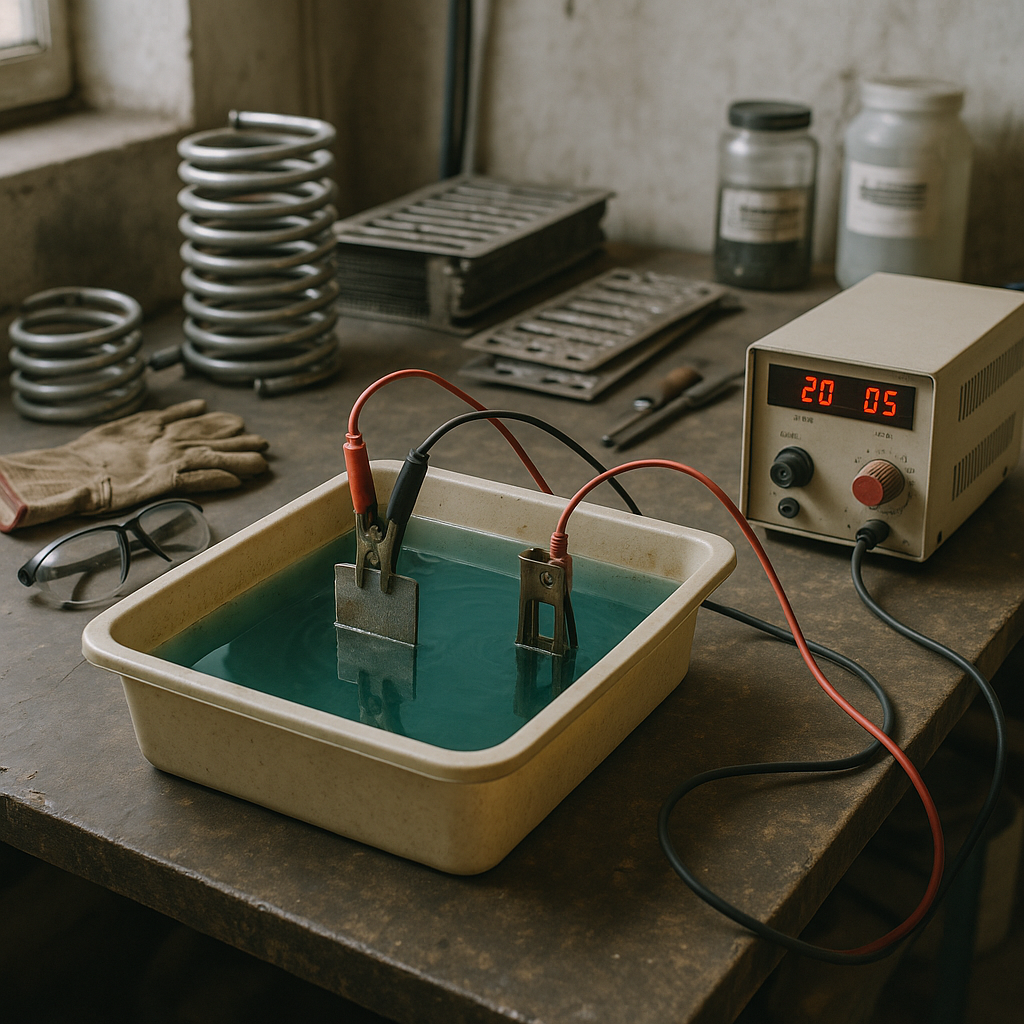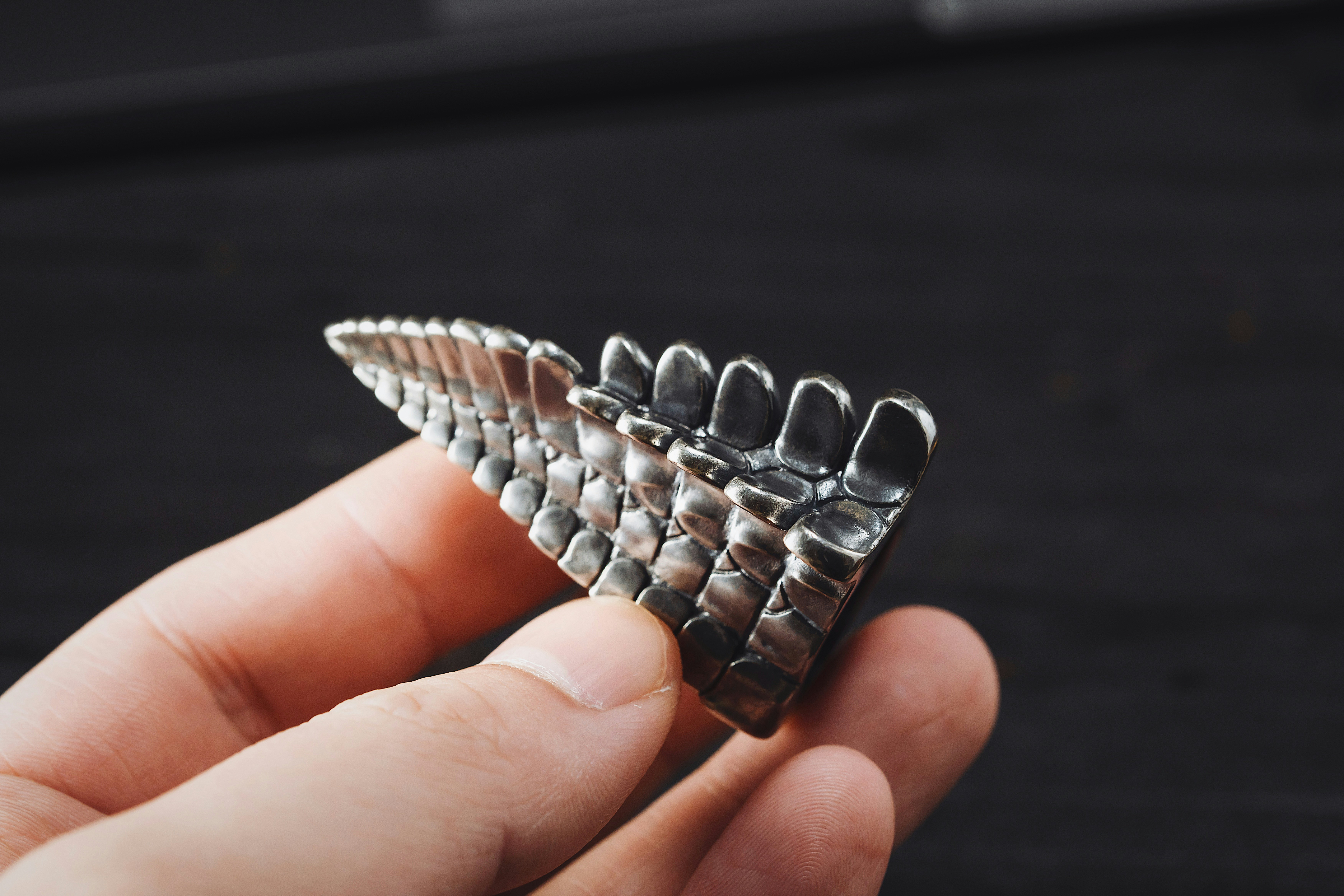5901 Botham Jean Blvd, Dallas, TX 75215
What Are Rare Metal Recovery Technologies?
June 13, 2025Rare metal recovery technologies are at the forefront of resource management in our material-driven world. These specialized processes extract valuable metals from waste streams, discarded electronics, and low-grade ores that traditional mining would typically overlook.
These technologies primarily focus on reclaiming rare earth elements (REEs), high-tech metals, and critical minerals essential for products ranging from smartphones to electric vehicles. The global demand for these materials is rising as renewable energy and advanced electronics industries grow.
The drive for more efficient recovery methods goes beyond economics. It meets the urgent need to establish resilient, sustainable supply chains for materials facing significant geopolitical and environmental challenges. With many rare metals concentrated in a few countries, recovery technologies provide a path to resource security and reduced environmental impact.
What are the Key Innovations in Rare Metal Recovery?

The race to recover valuable rare metals from secondary sources has accelerated in recent years. These innovations are not just technological achievements; they represent critical solutions for environmental sustainability and resource security as primary ore deposits become depleted.
Two major technological approaches have emerged as pivotal in this field: hydrometallurgical extraction methods and intermediate-temperature processes. These innovations offer more efficient and environmentally sound alternatives to traditional pyrometallurgical techniques that require extreme temperatures and generate harmful emissions.
Advanced Hydrometallurgical Extraction Methods
Hydrometallurgical techniques have transformed how we extract valuable metals from low-grade ores and secondary sources. These water-based chemical processes operate at lower temperatures than traditional smelting, reducing energy consumption and environmental impact.
Key innovations in hydrometallurgical extraction include:
- Hydrochloric acid total leaching, which dissolves metal components from waste materials for later recovery through precipitation
- Selective leaching techniques that target specific valuable metals, improving processing efficiency
- Optimized sodium carbonate precipitation methods that achieve recovery rates exceeding 99% with high purity
These approaches have shown particular promise in extracting rare earth elements from spent catalysts, magnets, batteries, and metallurgical sludge. For example, recent research demonstrated a hydrometallurgical process using a combination of hydrochloric acid, hydrogen peroxide, and acetic acid that achieved nearly complete extraction of gold, platinum, and palladium from various electronic waste streams.
Breakthrough Intermediate-Temperature Processes
Between traditional hydrometallurgical methods and high-temperature pyrometallurgy lies an emerging field of intermediate-temperature processes. These techniques operate at moderate temperatures to enhance metal recovery while maintaining energy efficiency.
Notable innovations include:
- Sulfation roasting, which converts metal oxides into soluble metal-sulfate salts, enhancing subsequent leaching efficiency
- Pyrolysis techniques that thermally decompose complex materials like printed circuit boards, separating valuable metals from organic components
- Electrodissolution-coupled synthesis approaches showing promise for processing complex materials such as hafnium feedstocks
A practical application of these technologies can be seen in the treatment of electronic waste. When applied to printed circuit boards, intermediate-temperature pyrolysis breaks down the organic components while preserving the metallic elements for subsequent recovery. This approach avoids the toxic gas emissions associated with incineration while achieving high metal recovery rates.
| Recovery Method | Key Innovations | Applications | Recovery Efficiency | Environmental Benefits |
|---|---|---|---|---|
| Hydrometallurgical Extraction | Hydrochloric acid total leaching, selective leaching, sulfuric acid leaching, precipitation techniques | Low-grade ores, secondary sources, spent catalysts, magnets, batteries | High (up to 99% for optimized methods) | Lower energy consumption, reduced emissions (up to 80% less greenhouse gases) |
| Intermediate-Temperature Processes | Sulfation roasting, pyrolysis, electrodissolution-coupled synthesis | Printed circuit boards (PCBs), hafnium feedstocks, complex e-waste | High for specific metals | Avoids toxic gas emissions, moderate energy requirements |
| Sodium Carbonate Precipitation | Optimized precipitation for rare earth elements | Nd-Fe-B magnets | 99.12% recovery with 98.33% purity | Reduced chemical consumption |
| Ammonium Sulfate Roasting | Enhanced titanium compound conversion | Ilmenite ore | TiO₂ enrichment to 76 wt% | Less energy than traditional methods |
| H₂SO₄ and H₂O₂ Leaching | Selective dissolution of target metals | Anode slime | >99% Cu and 97% Te removal while preserving Au and Ag | Precise separation with reduced waste |
| Bioleaching | Uses microorganisms to extract metals | E-waste, low-grade ores | Eco-friendly alternative to chemical leaching |
Environmental and Economic Benefits
These innovative metal recovery processes deliver substantial environmental and economic advantages. Circular economy principles drive these technologies, transforming what was once considered waste into valuable resources.
The environmental benefits include reduced reliance on environmentally damaging primary mining operations, decreased energy consumption compared to traditional methods, and minimized generation of toxic byproducts. Studies indicate that hydrometallurgical techniques can reduce greenhouse gas emissions by up to 80% compared to conventional mining and processing.
From an economic perspective, these innovations make previously unprofitable recovery operations viable. With the increasing scarcity of primary resources and growing demand for rare metals in electronics, renewable energy technologies, and advanced manufacturing, these recovery methods provide a crucial alternative supply chain for critical materials.
What are the Process-Specific Breakthroughs in Rare Metal Recovery?

A detailed view of an electroplating setup used for recovering metals from chiller components.
Modern recycling faces a critical challenge in extracting valuable rare metals from complex waste streams. Recent technological advancements have significantly improved recovery rates while reducing environmental impacts. These breakthroughs target specific materials containing high-value metals essential to technology manufacturing.
Sodium Carbonate Precipitation for Rare Earth Recovery
The optimization of sodium carbonate precipitation has transformed rare earth element recovery from Nd-Fe-B magnets, achieving 99.12% recovery rates and 98.33% purity levels. This technique selectively precipitates rare earth elements from the solution, leaving impurities behind.
Traditional methods typically suffered from lower purity levels and required multiple processing steps. The refined sodium carbonate approach offers a more streamlined solution, reducing chemical consumption while enhancing results. This advancement supports recycling facilities in recapturing these strategic materials from end-of-life electronics.
Ammonium Sulfate Roasting for Titanium Dioxide Extraction
Titanium dioxide recovery from ilmenite ore has improved through ammonium sulfate roasting techniques, enabling TiO₂ enrichment to 76 weight percent. This method involves treating the ore with ammonium sulfate at elevated temperatures to convert titanium compounds into more easily recoverable forms.
The roasting process creates soluble titanium compounds that can be separated through subsequent leaching steps, offering recycling facilities a more efficient pathway to recover titanium dioxide, which remains in high demand for pigments, coatings, and specialty materials. This method requires less energy than traditional techniques while producing higher-grade material.
H₂SO₄ and H₂O₂ Leaching for Copper and Precious Metal Recovery
Anode slime processing has benefited from innovative leaching techniques using sulfuric acid (H₂SO₄) and hydrogen peroxide (H₂O₂). This combined approach successfully removes over 99% of copper and 97% of tellurium from anode slime while preserving valuable gold and silver content. The selective nature of this process represents a significant advancement in metallurgical separation.
The leaching solution dissolves targeted metals while leaving precious metals intact, creating two value streams from a single waste material. Before this breakthrough, facilities often struggled with lower recovery rates or loss of precious metals during processing. This technique provides recycling operations with a more precise tool for handling complex metal-bearing waste streams.
These process-specific innovations demonstrate how targeted chemistry can address the unique challenges of different waste streams. Each breakthrough focuses on optimizing a particular aspect of metal recovery while considering the specific characteristics of the source material. As industrial processes generate increasingly complex waste materials, these specialized approaches will become essential for effective resource recovery.
What Challenges Persist in Rare Metal Recovery?

Rare metal recovery is a critical area in sustainable resource management. Despite technological advancements, the industry faces persistent obstacles that hinder widespread commercial viability. Organizations in this field encounter several challenges requiring innovative solutions.
Feedstock variability is a major hurdle in rare metal recovery operations. Secondary sources like electronic waste, spent catalysts, and industrial byproducts have inconsistent material quality. This unpredictability forces recovery processes to adapt to changing input compositions, complicating standardization efforts and reducing efficiency.
Low concentrations of target metals compound these difficulties. Many waste streams contain rare metals in minimal amounts—often mere fractions of a percent by weight. This requires processing large volumes of material to recover economically viable quantities of metals, akin to searching for needles in haystacks on an industrial scale.
Impurities in waste materials add complications. Contaminants can interfere with extraction chemistry, reducing yield rates and introducing unwanted elements into the final product. These impurities often necessitate additional purification steps, increasing complexity and processing time.
Economic barriers are significant in rare metal recovery. High processing costs stem from intensive energy requirements, especially for methods like pyrolysis and high-temperature roasting, which demand temperatures exceeding 800°C. Such energy-intensive methods quickly become cost-prohibitive without substantial economies of scale.
Hydrometallurgical processes, while generally more energy-efficient than thermal methods, face selective extraction challenges. These chemical methods often struggle to distinguish effectively between target metals and similar elements, potentially leading to valuable metals being lost in waste streams or final products contaminated with unwanted elements. This selectivity issue is particularly problematic when recovering chemically similar rare earth elements.
Technical challenges extend to environmental concerns. Some recovery methods generate toxic byproducts requiring careful handling and disposal, creating regulatory hurdles and compliance costs that further strain economic feasibility.
Partner with Okon Recycling for Smarter Rare Metal Recovery

Rare metal recovery technologies are redefining how we source critical materials, offering environmentally responsible and economically viable alternatives to traditional mining. As demand for rare earth elements and high-tech metals continues to surge, advanced recovery solutions are no longer optional—they’re essential.
Okon Recycling is at the forefront of this transformation. Whether you’re managing e-waste, manufacturing byproducts, or looking to recover strategic materials from complex feedstocks, our team brings the expertise, technology, and infrastructure needed to unlock value from overlooked resources.
Contact Okon Recycling at 214-717-4083 to discover how your business can reduce waste, reclaim rare metals, and build a more sustainable supply chain.
